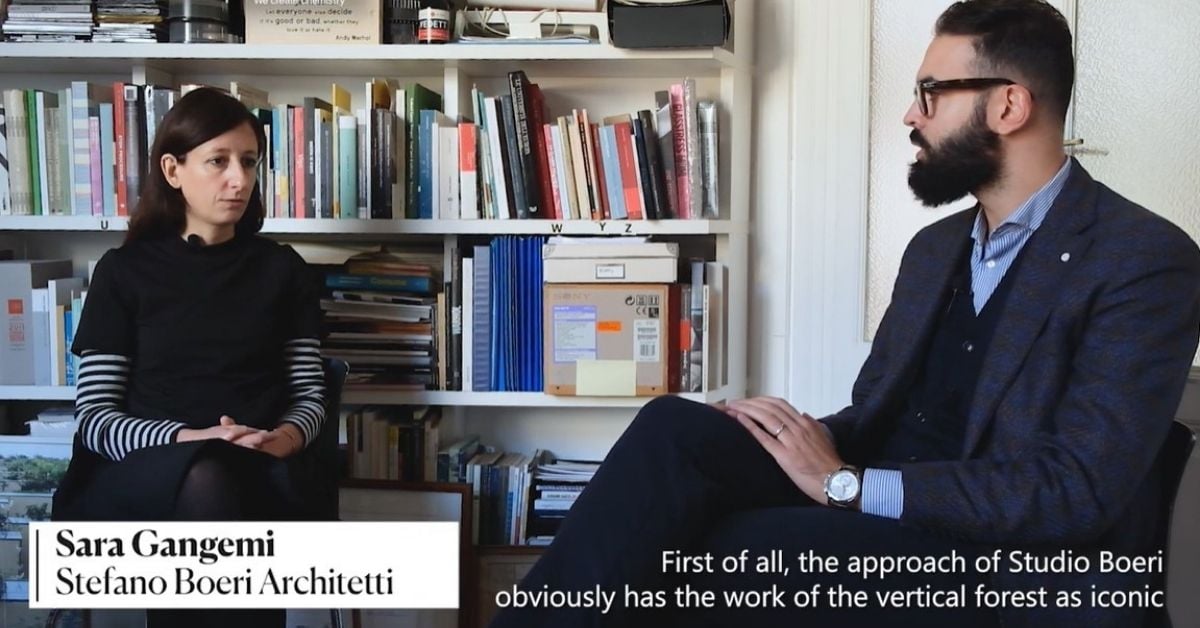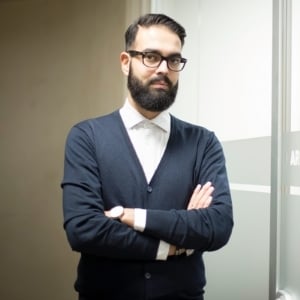In this Architectural Talks interview, Raffaele Bulgarelli of Manni Group meets Sara Gangemi, Senior Landscape Architect of Stefano Boeri Architetti, the architectural firm behind the iconic Bosco Verticale project in Milan, to discuss the fundamental contribution of an architecture increasingly oriented towards building a sustainable future.
Here is what you will find in this article:
The Stefano Boeri Architetti firm
Stefano Boeri Architetti is a firm with offices in Milan, Shanghai and Tirana, which since 1993 has been involved in planning and research not only in the field of architecture and town planning, but also in the fields of culture, design and interior design.
Stefano Boeri Architetti is founded on the principle of “Multiplicity”, which perfectly explains the multidisciplinary nature of the firm.
It is led by Stefano Boeri, an architect and urban planner also known for his fight against climate change in international architecture.
The firm carries out architectural and urban regeneration projects in complex locations and on several continents, and has always adopted a sensitive approach to the issue of sustainability that has enabled it to acquire a strong identity and establish itself as a reference point at Italian and international level in areas such as sustainable biodiversity architecture, social housing and urban development strategies at different scales.
The firm's most significant projects include:
In the interview with Manni Group, Sara Gangemi of Stefano Boeri Architetti talks about how sustainability is at the heart of the firm's projects, with the Bosco Verticale project as a reference point.
In the course of the interview, we will discover the importance for the study of the relationship between sustainability, the city, man and nature and his commitment to creating buildings that help restore a balance between these factors.
Topics such as off-site technology, urban greening and the role of cities in climate change are touched upon.
Interview with Sara Gangemi of Stefano Boeri Architetti
The interview with Sara Gangemi of Stefano Boeri Architetti, conducted by Raffaele Bulgarelli of Manni Group is provided below.
We hear more and more about sustainability, large projects and complexity.
I ask you: how can off-site technology contribute to the architecture of the future? And how can it improve the construction stages and draw a new line in architecture?
From town planning to architecture, the principle of sustainability is transversal in our approach. The entire activity of the firm is inspired by the iconic work of the Bosco Verticale based on sustainability criteria that investigate the relationship between city, man and nature within the living space.
Economic sustainability is also increasingly urgent and has been taken up as a challenge within the very design of the Boschi Verticali to make them accessible to users with different backgrounds and economic possibilities.
The first vertical social housing forest in the Netherlands was recently opened and this was possible precisely because we used offsite technologies.
This made it possible to realise a complex project in which vegetation plays a central role together with all the technology that was needed to bring greenery onto the façades.
But through the prefabricated element it was possible to control the costs of the flats.
Students, families and young couples are gradually coming in, so this was the first opportunity for us to experiment with the possibility of containing the costs of a complex project through the prefabricated element, such as the Bosco Verticale that was the first prototype in Milan.
How does urban greening fit into your projects and, above all, how does this element of greenery enhance and give high value to your architecture?
There is an increasing urgency to understand the role that cities play in climate change, and therefore there is also an urgency to find solutions first and foremost to the problem of climate change within the city.
The theme of forestation is one of the main principles on which we are defining guidelines, for example, in projects involving Italian municipalities at the urban planning level as well as in actual architectural design such as the Bosco Verticale.
It is key to create green infrastructure within the city, to create what are called green and blue infrastructures where green corridors are accompanied by city services.
This is perhaps the hinge at the most urbanistic level.
At the same time, soil is a crucial issue in the challenge to climate change.
Italy is a fragile territory and the waterproofing our country has experienced over the last 50 years has made it even more delicate.
For this reason, another element that must be introduced in the construction of guidelines for cities is certainly the control of land consumption.
Green façades and green roofs play a key role because in cities, the heat island phenomenon is one of the most present problems.
The bosco verticale with its green façades is, for example, one of the elements with which the heat island can be mitigated.
Green roofs then have a dual function: they help buildings from the point of view of thermal control and can become high gardens that inhabitants can access.
Therefore, the issue of urban forestation and, more generally, the change of perspective being made on cities may one day become the heart of a new city-oriented sustainability.
So we can speak of a city that even in this time of pandemic can provide its inhabitants with a new escape route or at least a place to take shelter at certain times.
The roofs of our cities could truly become an important resource.
There are several articles about how new fauna, from foxes to seagulls, is entering the cities in recent years.
Therefore the complex man-nature relationship in the city poses new challenges.
During the pandemic period, the need for a renewed neighbourly relationship also emerged.
We have all stopped travelling and moving around, so it has become crucial what you experience in your neighbourhood.
Many friends and colleagues recounted how they habitually frequented community gardens within their neighbourhood because they were spaces to vent.
We in the firm also did some thinking and tried to figure out how the roofs of our future projects could become gathering places where people could meet with their neighbours and create a new relationship of citizenship on a neighbourhood scale.
The masterplan of a project in Albania comes to mind.
On that occasion, although dramatic because it was framed by the tensions of the pandemic, we gave a lot of thought to the masterplan guidelines so that they would also try to change the perspective of how cities are understood and built today.
The neighbourhood relationship becomes crucial perhaps also as a result of what has happened in the last two years.
Thinking about services at a local level, trying to bring people back to live in their neighbourhoods by not having to travel great distances to reach schools, services and parks becomes a bit of a matrix on which to rethink cities.
We talked about the building industry changing more and more towards off-site and hopefully there will be more and more green roofs and more green space in cities.
So what advice do you give today for the future to a young designer who wishes to approach the profession of architecture?
All the topics touched upon so far make it clear that we are not only talking about architecture but that it is essential to interface with all disciplines that make up the construction of projects: from urban planning to architecture to communication.
I personally experience this on a daily basis in my firm and believe that multidisciplinarity is a horizon to be taken into account for young professionals who wish to approach the work world as it is today.
Furthermore, it has become indispensable to understand how to control design in order to achieve passive architectures, so having a confrontation with those who have these technological skills also helps to build more sustainable projects.
It is important to be knowledgeable and have skills in one's own discipline, but one must be very sensitive and open to the contamination of other subjects: from agriculture to botany to art.
The latter is extraordinarily important in our design because through film, photography, painting, we acquire a different sensitivity of looking at the world.
Therefore my advice is this: be open to everything and be curious about the world.
Read the words of the main players in international architecture in interviews with Manni Group's Archistars created in collaboration with Yacademy.
A content dedicated to the new paradigms of sustainable architecture and design ideas of the future.


